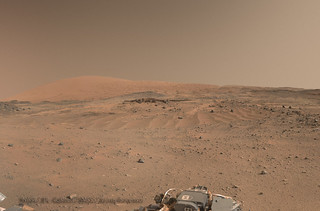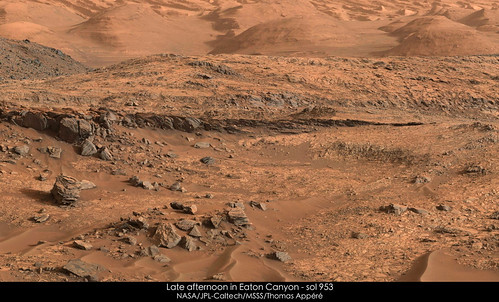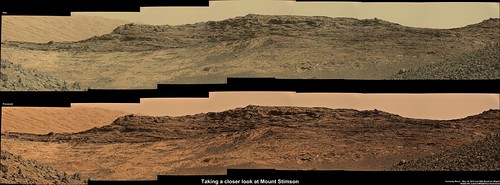Dave
Martian sky color has be much discussed here in dozens if not hundreds of threads and you can find out a lot by searching and reading. Orange is usual--close to what we would see if there--blue shows up in color stretched images and some sunsets. Skies are only blue on Mars if you are in a spacecraft above a high percentage of the atmosphere...
Martian sky color has be much discussed here in dozens if not hundreds of threads and you can find out a lot by searching and reading. Orange is usual--close to what we would see if there--blue shows up in color stretched images and some sunsets. Skies are only blue on Mars if you are in a spacecraft above a high percentage of the atmosphere...
Yeah, Ive read dozens of topics on the sky color, and probably hundreds of posts, including a lot form Nasa, Ive been left with the conclusion that the color is difficult to really ascertain because we just dont have a human eye up there. Ive actually got several non color stretched images from Curiosity that show fairly blue sky, also from Opportunity, and then a few days later, what I call muddled orange sky.
The thing that strikes me at all with mars is at 1% atmosphere as Earth, why the sky is even bright at all, in order to get to 1% ATM on earth you have to be approx 100,000ft elevation, this is 2/3rd the way through the Earth's atmosphere, and according to NASA: "You can start to get a feel for how high 100,000 feet is by remembering that commercial jets travel at about 30,000 feet. 100,000 feet is about 2/3 of the way through the stratosphere, and the majority of the mass of the earth's atmosphere is below the balloon at that height. You can tell that there are fewer gas molecules at 100,000 feet when you see video from the balloon. The sky is as black as night, but the sun is still visible."
Anyway, I just find it very interesting regarding Mar's ever changing Sky's...I wonder sometimes if a lot of the light is IR or UV that basically just is being picked up by the camera sensors, like taking the filters off a home camera...you get to start seeing things your eye cannot.
EDIT: I think I came across a few more articles that describe a juxtaposition of sorts regarding Mars vs Earth sky colors, especially regarding time/day and sun direction...and horizon vs overhead. Makes more sense why it seems to vary so much from image to image.
Thx for the reply, now...back to the new rocks...they are awesome! every corner in the crater has something so different that before, does anyone else think they look yummy...like thin layers of crepes? :-) LOL
















